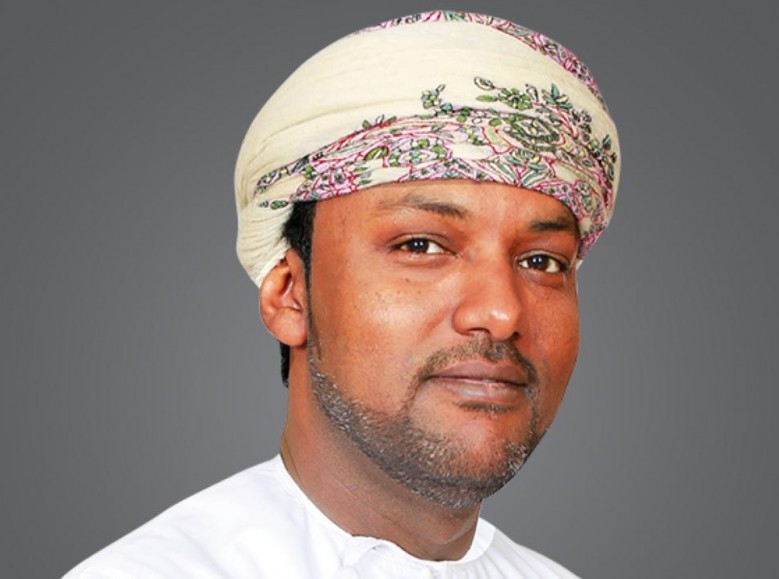HE Tahir bin Salim Al Amri, Executive President, Central Bank of Oman says the banking sector provided adequate credit and other banking services efficiently to all segments of the economy while pursuing prudent practices to mitigate risks in 2018 in an exclusive interview
How has Oman’s banking sector’s performance been in 2018?
Omani banking sector remained strong while supporting the growth of diversified economic activities in the Sultanate. The credit extended by ODCs (conventional and Islamic banks) increased by 6.4 per cent during 2018 (on the top of a similar growth in 2017) in line with growth in the economy. Notably, the healthy growth in bank credit was attained despite intermittent liquidity tightening and hardening of interest rates. Strategically significant economic sectors were the main recipients of the credit disbursed in 2018, as credit to the manufacturing, transport & communications and services sectors increased by 19.6 per cent, 13 per cent and 17.5 per cent, respectively, during the year.
Furthermore, the growth in credit was supported by aggregate deposits, which grew by 7.8 per cent in 2018 as compared to 5.6 per cent in 2017. The domestic interest rates remained on the upward trajectory in 2018, following the trends in the USA. The weighted average interest rate on rial Omani deposits hardened to 1.899 per cent in December 2018 from 1.667 per cent in December 2017, while that on rial Omani lending increased to 5.329 per cent from 5.204 per cent during this period. Despite healthy growth in credit, the banking sector displayed resilience and remained adequately capitalised with Basel capital adequacy ratio at 16.5 in September 2018, much higher than the mandated at 12.875 per cent. At the same time, the economic recovery helped banks to maintain the quality of loans and delinquency rate remained low, albeit gross non-performing loans of conventional banks (including Islamic windows) witnessed some uptick to 2.7 per cent in September 2018 from 2.0 per cent in December 2017. Overall, the banking sector performed satisfactorily in 2018, providing adequate credit and other banking services efficiently to all segments of the economy while pursuing prudent practices to mitigate risks.
Please share a few policy measures taken by the Central Bank of Oman to strengthen the banking sector in the Sultanate?
The Central Bank of Oman (CBO) continued to pursue policies so that the banking sector fulfills its role of financial intermediation efficiently in the economy without posing any threat to financial stability. Towards this objective, the CBO undertook several policy measures in 2018, enabling additional space for lending and effective liquidity management of banks, among others. The minimum capital adequacy ratio (CAR) as a percentage of risk-weighted assets was reduced from 12 per cent to 11 per cent effective from April 1, 2018. The CBO allowed banks to reckon their net domestic inter-bank borrowings as part of the deposit base for lending ratio purpose in order to expand the room for additional lending. The CBO also withdrew the minimum 100 per cent risk weight requirement on exposures to other Sovereigns and Central Banks, and followed the Basel norms in this regard.
Furthermore, the prudential limit for credit exposures to non-residents and placement of funds abroad as percentage of local net worth was raised to 75 per cent from 50 per cent earlier to provide greater operational flexibility for efficient treasury operations, liquidity management, sound correspondent relationships, etc. The prudential limits have been increased for all currencies’ liquidity gap based on different maturity time bands. As part of its commitment to the Basel Committee on Banking Supervision Reforms (Basel III), the CBO continued with the phased implementation of Liquidity Coverage Ratio (LCR) and Net Stable Funding Ratio (NSFR). The banks were asked to maintain a minimum LCR at 90 per cent in 2018 and 100 per cent by January 2019 to ensure adequate high-quality liquid assets with them. The NSFR, which provides a better assessment of funding risk across all on- and off-balance sheet items, has been implemented in 2018 as a minimum standard of 100 per cent as per Basel Committee’s timeline. All the above measures would help the banking sector in meeting the increased credit requirements and attaining higher operational efficiency without increasing any systemic risk.
Islamic Banking entities provided financing worth RO 3.6 billion from January-October 2018 compared to RO 3.0 billion in the corresponding period in 2017. How do you assess the performance of Islamic Banking entities in Oman and their potential?
Since the onset of Islamic banking in the Sultanate in 2013, Islamic Banking entities (IBEs) have made remarkable progress and contributed efficiently to financial intermediation in Oman. The introduction of Islamic Banking has not only filled the gap but also contributed to the improvement in overall efficiency in banking services through infusing competition and providing alternative financial instruments to the niche clients. Currently, IBEs operating in Oman include two full-fledged Islamic banks and six Islamic banking windows (created by six local banks) with 76 branches across the country. Financing extended by Islamic banks and windows witnessed a remarkable average annual growth of 58.1 per cent during the period 2014-2018 and stood at RO3.6 bn at the end of December 2018. Total assets of Islamic banks and windows, which grew remarkably by an annual average of 37.4 per cent during 2014-2018, stood at RO4.4bn and constituted 13 per cent of total banking sector assets in December 2018. The CBO has also been encouraging the growth of Islamic Banking in the Sultanate through various policy interventions. IBEs are exempted from limits of exposure to personal and housing finance, allowing them to establish a retail sector-financing portfolio. Furthermore, prudential limits pertaining to overseas investments were not made applicable to IBEs as there were no feasible Sharīʻah-compliant investment opportunities in the Sultanate. Although the performance of IBEs has been remarkable so far, we are cognisant of the fact that more is needed for their sustainable growth and efficient operations. In this regard, the strategic plans include liquidity management frameworks and instruments, diversified financing portfolios and innovative Islamic finance products. With the introduction of novice products, especially for corporate customers and SMEs, and Sharīʻah-compliant liquidity management tools for interbank and central bank interface, the Islamic banking is expected to maintain a considerable growth and achieve its full potential.
Given the improved economic prospects and favourable financial market conditions, how do you foresee the banking sector’s prospects?
The Omani economy gained further momentum and grew by 15.3 per cent in the first nine months of 2018 as against 8.0 per cent during the same period of 2017. The non-oil economic activities have also been expanding at a reasonable rate. It is heartening to note that the economic prospects for Oman appear to be good with recovery in oil prices following a plunge in December 2018 and non-oil economic activities improving steadily. It is well established that the banking sector’s performance moves largely in tandem with the progress of economic activities, as the latter not only creates demand for bank credit but also helps banks in maintaining the quality of assets. Thus, it is felt that with an improved economic outlook, the banking sector would be able to maintain a healthy performance in 2019 as well.






